Investment data APIs are now a core requirement for UK fintech apps looking to offer more than just transaction visibility. From tracking wealth and verifying income to enabling Source of Funds checks, platforms need access to accurate, real-time financial data.
Not all APIs are built to support these use cases.
Some specialise in fund-level data and market feeds. Others, like Finexer, provide real-time bank data aggregation that enables investment visibility, income detection, and financial profiling i.e ideal for products combining onboarding, compliance, and advisory workflows.
This blog compares 7 trusted investment data APIs available to UK fintechs including both Open Banking providers and institutional-grade market data platforms.
Comparison Table
| API Provider | Best For | UK Coverage | Investment Data Type | Real-Time Support | Key Advantage |
|---|---|---|---|---|---|
| Finexer | Source of Funds, onboarding, categorised income | ✅ Yes | Bank-linked deposits, profiling | ✅ Yes | Built for UK fintech; 99% bank coverage with SoF insights |
| Morningstar | Fund comparisons, ESG data, portfolio analysis | ✅ Yes | Fund metadata & performance | ✅ Yes | Asset-level investment info with ESG ratings |
| Refinitiv (LSEG) | Trading platforms, market analytics | ✅ Yes | Market & asset class data | ✅ Yes | Institutional-grade feeds across multiple asset types |
| QUODD | Real-time equity & ETF dashboards | ✅ Yes | Equities, ETFs, fundamentals | ✅ Yes | Reliable pricing for listed assets |
| Plaid Investments | Aggregating user-held investment accounts | ✅ Yes | Account-level holdings | ✅ Yes | Connects to users’ real portfolios across brokers |
| OpenPayd | Embedded finance, banking + payments layer | ✅ Yes | Banking + contribution data | ✅ Yes | Unified virtual accounts + Open Banking |
| Bud | Data enrichment for onboarding & advice | ✅ Yes | Categorised banking data | ✅ Yes | Advanced enrichment & affordability insights |
1. Finexer
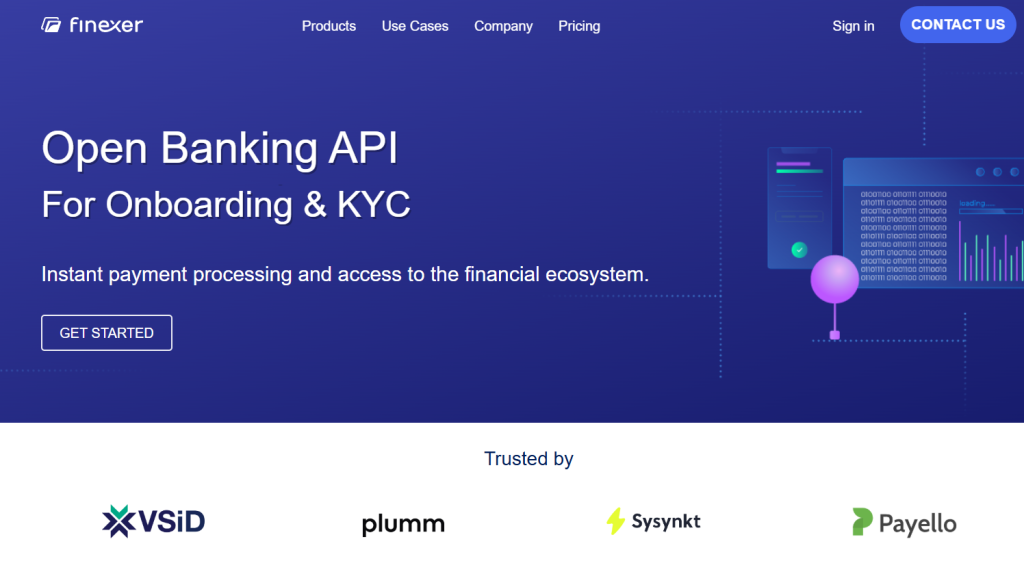
Best For
UK fintech apps that need an investment data API focused on real-time bank access, ideal for verifying Source of Funds, tracking income flows, and powering compliant onboarding.
Overview
Finexer is more than a traditional Open Banking API. It acts as a UK-focused investment data API, giving platforms access to high-quality, real-time insights drawn directly from user accounts.
Whether you’re building an app for financial advice, Source of Funds validation, or investment onboarding, Finexer makes it easy to:
- Detect salary, pension, or dividend deposits
- Monitor investment-related transactions in real time
- Build accurate financial profiles based on categorised income and spend
Key Features
- 99% UK bank coverage with real-time bank feeds
- Smart transaction categorisation (salary, dividends, rent, etc.)
- Webhook-based monitoring to sync bank data instantly
- Branded consent flows to support trust and compliance
- Structured financial insights are ideal for investment apps, onboarding, or credit models
Why Finexer Stands Out
Unlike generic financial data APIs, Finexer is built specifically for UK fintech use cases. From affordability checks to advisory tools, it delivers the real-time financial data needed to inform investment workflows — all through a single, developer-friendly integration.
UK Use Case
Used by fintechs for:
- Source of Funds checks during onboarding
- Investment monitoring via income and deposit tracking
- Automated KYC/AML flows with bank-verified data
Pros
- Full UK Open Banking API coverage
- Clear, structured data built for financial products
- Developer-first setup and usage-based pricing
- Fast deployment and FCA-authorised infrastructure
Cons
- Newer in the Market

Finexer helps your platform:
- Track categorised income and deposits
- Support Source of Funds validation with live data
- Build audit-ready financial profiles for onboarding
- Automate KYC and AML checks using verified bank feeds
Finexer’s infrastructure is FCA-regulated, developer-ready, and built to scale with the needs of UK-based fintechs, lenders, and compliance platforms.
Real-World Results: Trusted by Leading Providers
One example is VirtualSignature-ID, a UK-accredited digital identity provider that integrated Finexer to streamline its onboarding and Source of Funds workflows.
“Finexer is easy to work with and flexible in their approach, providing the bespoke services we required alongside a viable commercial package. Finexer has proven to be more than a provider they’re a trusted partner who understands our vision and helps us achieve it.”
David Kern, CEO, VirtualSignature-ID
Get Started
Connect today and see why businesses trust Finexer for secure, compliant, and tailored open banking solutions.
What is an investment data API?
An investment data API lets apps access financial data like balances, income, and holdings in real time for onboarding or advisory use cases.
Can Open Banking provide investment insights?
Yes. Open Banking APIs help detect salary, dividends, and deposits useful for profiling and Source of Funds checks.
Are these APIs secure and FCA-compliant?
APIs like Finexer, Bud, and OpenPayd operate under FCA rules and use encrypted, consent-driven data access.
2. Morningstar Direct Web Services
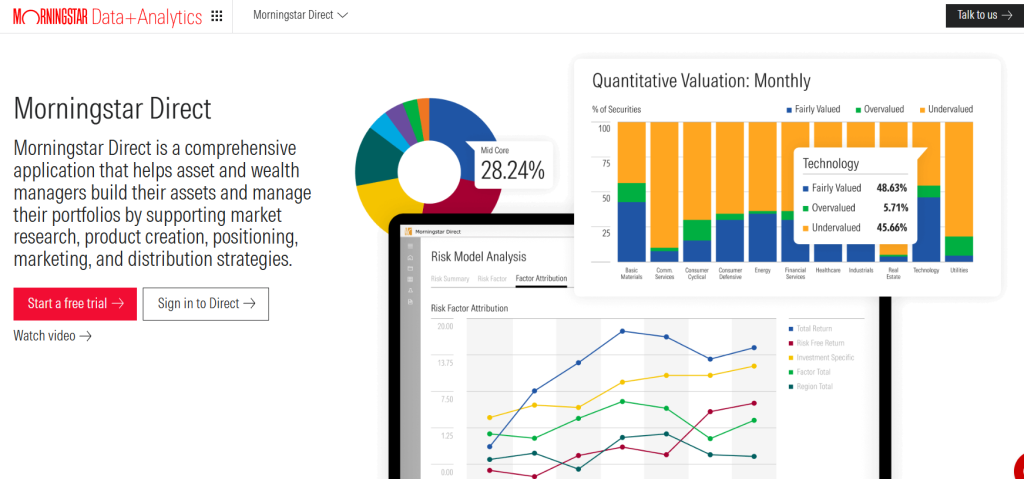
Best For
Fintech platforms and advisors that need access to verified fund data, historical performance, and ESG scoring, especially for UK-regulated investment products.
Overview
Morningstar is one of the most recognised names in investment intelligence. Its Direct Web Services API provides detailed data on mutual funds, ETFs, and pensions — including performance history, fees, and ESG metrics.
Unlike bank aggregation tools, Morningstar delivers asset-level investment data, making it ideal for fintechs offering research, product comparison, or portfolio performance features.
Key Features
- Comprehensive fund metadata, including fees and benchmarks
- ESG ratings and risk scoring for sustainable investment analysis
- Historical and real-time NAVs (Net Asset Values)
- Clean, structured data across multiple asset classes
Why It’s Different
Morningstar is designed for platforms that need to present or analyse investment products, not just track deposits. It’s especially useful in tools where users compare funds, visualise returns, or assess risk profiles.
UK Use Case
Perfect for investment apps, robo-advisors, or pension platforms that show:
- Side-by-side comparisons of UK-based funds
- ESG scores for compliance and client alignment
- 5-year performance or fee history during onboarding
Pros
- Deep coverage of UK investment funds
- Institutional-grade data accuracy
- Supports risk analysis and product recommendation logic
Cons
- Doesn’t connect to user accounts directly
- More complex and expensive than plug-and-play APIs
Does Morningstar cover UK-based fund data?
Yes, it includes UK mutual funds and pensions with detailed metadata, ESG scores, and historical NAVs.
3. Refinitiv Data Platform (LSEG)
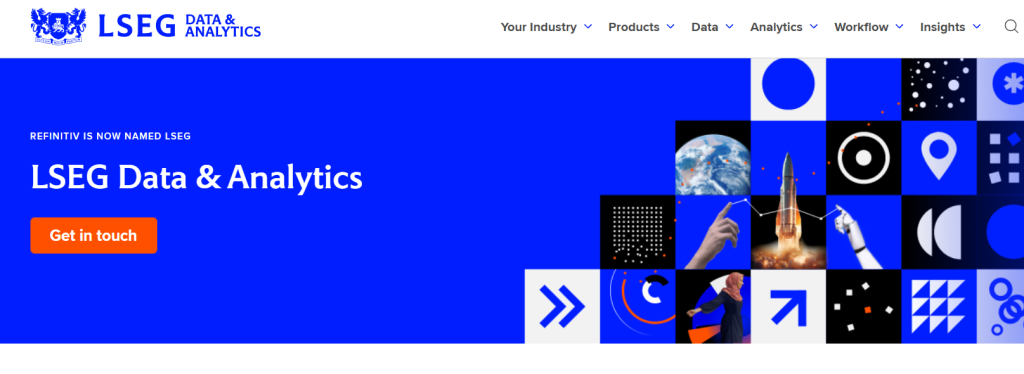
Best For
Fintech applications requiring extensive market data across various asset classes, including equities, fixed income, derivatives, and more, with a focus on real-time analytics and historical data.
Overview
Refinitiv, a part of the London Stock Exchange Group (LSEG), offers the Refinitiv Data Platform (RDP) APIs, providing seamless access to a vast array of financial data and services. These APIs are designed to support a wide range of use cases, from trading platforms to risk management systems, by delivering high-quality, real-time, and historical market data.
Key Features
- Broad Asset Class Coverage: Access to data on equities, fixed income, derivatives, commodities, and more.
- Real-Time and Historical Data: Provides both live market data and extensive historical datasets for in-depth analysis.
- Advanced Analytics: Tools for risk assessment, portfolio analysis, and market forecasting.
- Flexible Delivery Methods: Supports RESTful APIs, WebSocket, and other protocols to fit various integration needs.
Why It’s Different
Refinitiv stands out for its comprehensive data offerings and robust analytics tools, making it a go-to choice for institutions that require detailed market insights and the ability to perform complex analyses. Its integration within the LSEG ecosystem ensures reliability and regulatory compliance.
UK Use Case
Ideal for UK-based fintech firms developing trading platforms, investment analysis tools, or risk management systems that need access to a wide range of market data and analytical capabilities.
Pros
- Extensive and diverse financial data coverage.
- High-quality, real-time data feeds.
- Robust analytics and risk assessment tools.
- Flexible integration options.
Cons
- It may be more complex to implement compared to simpler APIs.
- Pricing may be higher, reflecting the depth and breadth of data provided.
4. QUODD
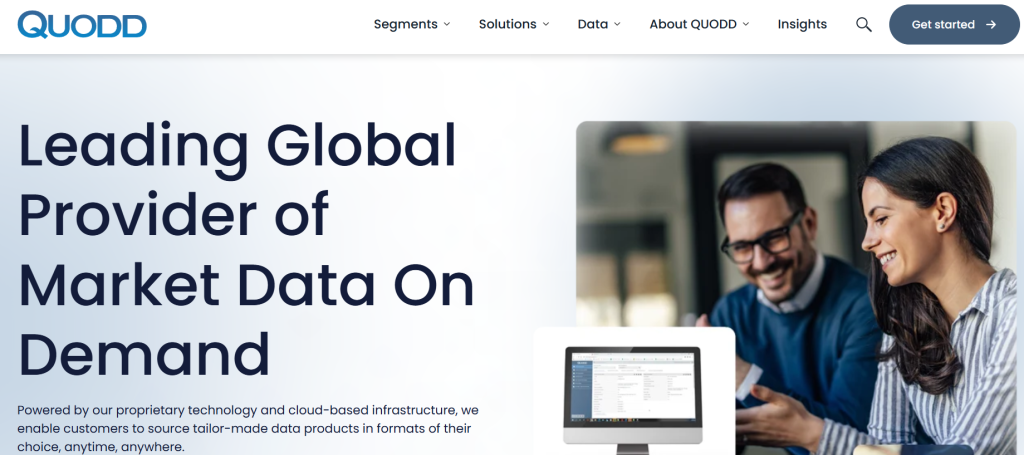
Best For
Wealthtech platforms and fintech dashboards that need live pricing, equity fundamentals, and historical performance data, including UK-listed securities and ETFs.
Overview
QUODD provides a suite of market data APIs designed for institutions, RIAs, and fintechs. Its API delivers real-time and delayed pricing, historical charts, and instrument-level data, with coverage that includes UK exchanges and securities.
While not Open Banking-based, QUODD is a great fit if your app requires accurate market valuation and tracking, especially across equity and fund products.
Key Features
- Live quotes for global and UK-listed equities
- ETF metadata, NAVs, and flows
- Company fundamentals and market snapshots
- REST API access with flexible formats
Why It’s Different
Unlike financial data aggregators, QUODD specialises in market-driven feeds — ideal for products that visualise investment performance or show real-time fund values alongside personal finance tools.
UK Use Case
Used by platforms that want to:
- Show live price charts for listed investments
- Present ETF data alongside personal portfolio holdings
- Combine market insights with user-linked banking data
Pros
- Reliable real-time and delayed pricing feeds
- Broad asset coverage, including funds and ETFs
- Scalable for fintechs serving wealth or trading clients
Cons
- Doesn’t connect to personal investment accounts
- Focused on market feeds, not transactional data
5. Plaid Investments API
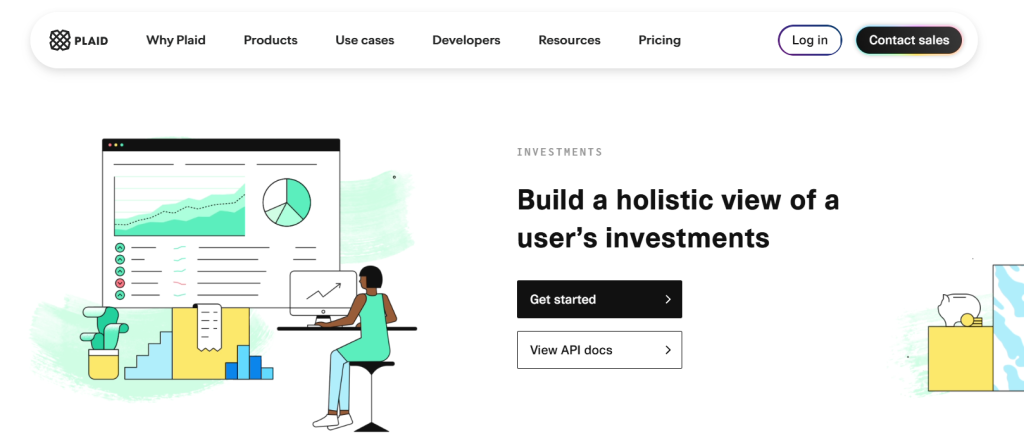
Best For
Fintech apps that want to display real-time portfolio balances, holdings, and historical investment transactions by connecting directly to users’ financial institutions.
Overview
Plaid’s Investments API allows fintechs to access investment accounts held by users across banks and brokers. It retrieves details such as account balances, individual holdings, and transaction history, giving platforms the ability to show personalised investment summaries inside apps.
Unlike APIs that focus on market prices or fund data, Plaid connects directly to the accounts themselves, making it ideal for wealth dashboards, savings apps, and retirement tools.
Key Features
- Account-level aggregation of investments
- Holdings with ticker symbols, quantities, and current value
- Historical transactions, including buys, sells, and dividends
- RESTful API with extensive documentation
Why It’s Different
Plaid focuses on user-permissioned financial access. It’s not built for market data, but rather to mirror what the user owns, across pensions, ISAs, and brokerage accounts.
UK Use Case
Used by fintechs in the UK to:
- Build real-time investment dashboards
- Track users’ portfolio performance over time
- Support use cases like retirement planning or goal-based investing
Pros
- Account-level aggregation of real investment data
- Clean, developer-friendly API structure
- Well-established security and compliance flows
Cons
- Market data (e.g. NAVs, fund scores) must be layered separately
- Availability may depend on supported institutions
6.OpenPayd
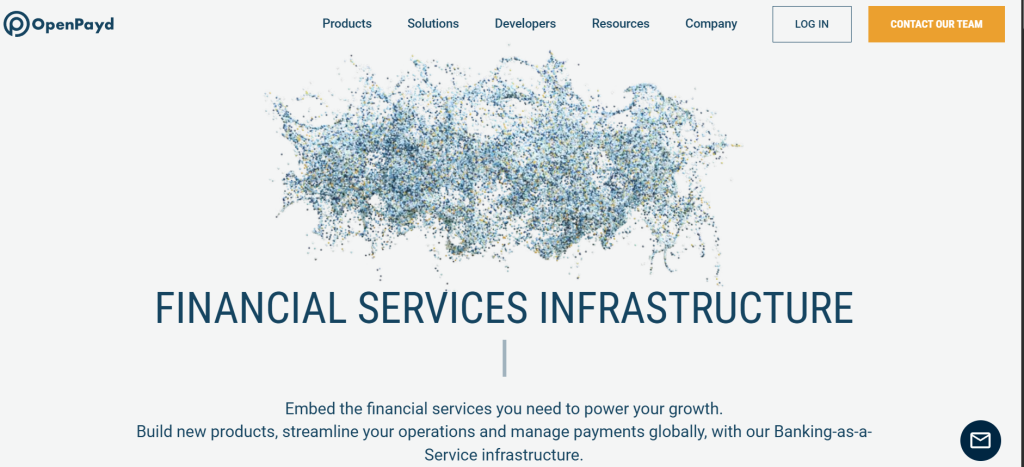
Fintechs that need a unified platform offering virtual accounts, real-time payments, and access to investment-aligned financial data via embedded APIs.
Overview
OpenPayd isn’t a traditional market data provider. Instead, it offers embedded financial infrastructure with capabilities like virtual IBANs, FX, and Open Banking data access, making it ideal for apps that combine banking, investment flows, and client onboarding.
Its Open Banking API helps retrieve account data across supported UK institutions, allowing platforms to track deposits, identify income sources, and connect financial activity to wealth, payment, or treasury functions.
Key Features
- Account and transaction data via Open Banking
- Virtual accounts for managing investment-related flows
- Payment initiation and account validation
- Developer-friendly APIs and scalable infrastructure
Why It’s Different
OpenPayd sits at the intersection of payments and data. It’s well-suited for fintechs that need flexible financial infrastructure to support investment experiences, especially where wallets, FX, or client money flows are involved.
UK Use Case
Used by platforms to:
- Monitor inbound transfers and investment contributions
- Power source-based onboarding (e.g., income verification)
- Connect bank data with treasury or investment-led applications
Pros
- Combines payments and data in one stack
- Strong developer tooling and UK regulatory alignment
- Suitable for investment apps with banking or treasury layers
Cons
- Doesn’t provide fund-specific or portfolio analytics
- Requires licensing for payment use cases
7. Bud Financial
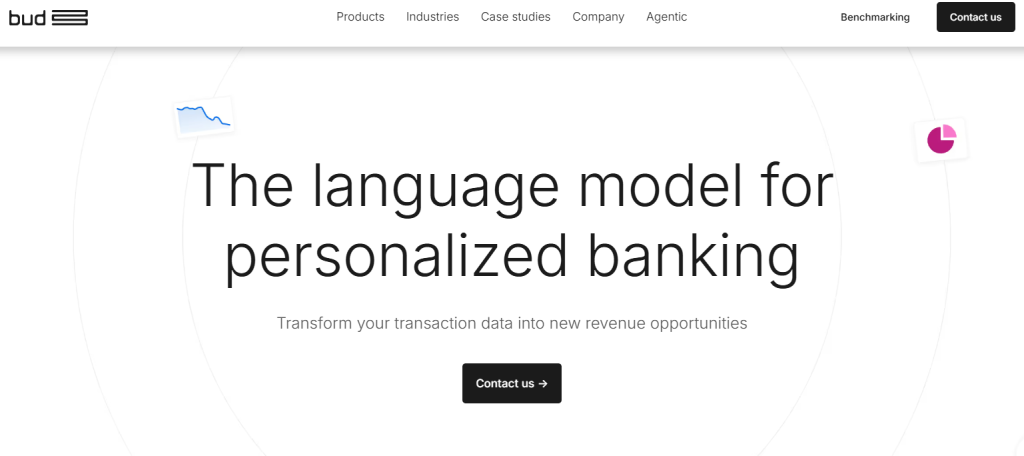
Best For
Platforms that want to turn raw banking data into structured financial insights, including income detection, affordability models, and investment-aligned client profiles.
Overview
Bud is a financial data intelligence platform that uses Open Banking to deliver enriched, machine-readable transaction data. While it doesn’t offer market prices or fund-level data, it’s highly effective at extracting investment-relevant signals from real-time banking feeds.
Bud helps fintechs identify income patterns, regular contributions, and financial health indicators, all of which are essential when powering investment recommendations, onboarding flows, or risk-based profiling.
Key Features
- Real-time access to accounts via Open Banking
- Categorisation and enrichment of transactions (e.g. salaries, pensions, investments)
- Insights engine for affordability, risk, and behavioural segmentation
- Customisable models to fit onboarding or advisory needs
Why It’s Different
Bud focuses on making raw data usable. Rather than just fetching balances, it helps fintechs derive context, which is essential for wealthtech platforms trying to build trust, automate advice, or satisfy regulatory obligations.
UK Use Case
Used by UK fintechs for:
- Building onboarding flows with verified income and spend
- Detecting investment-related deposits (e.g. ISA top-ups, dividend inflows)
- Supporting KYC, affordability, and SoF analysis
Pros
- Strong enrichment engine for bank data
- Highly configurable for compliance, lending, or advisory use cases
- Trusted by UK banks and FCA-regulated firms
Cons
- No access to fund performance or market-level data
- Data enrichment models may require training and tuning
Conclusion: Selecting the Right Investment Data API for Your Use Case
The APIs listed above vary significantly in purpose and data depth. Choosing the right one depends on the specific investment-related functionality your platform needs:
- If you require asset-level investment information such as fund performance, ESG scores, or portfolio analytics, platforms like Morningstar and Refinitiv offer structured investment metadata and long-term performance histories.
- If your product relies on account-level investment visibility, such as current holdings and historical trades across user-connected accounts, Plaid Investments and QUODD are more suitable.
- If your focus is on onboarding, compliance, or income-based financial profiling, Open Banking-based APIs such as Finexer, Bud, and OpenPayd provide structured access to user-permissioned bank data that can support Source of Funds validation, financial behaviour analysis, and affordability checks.
Request a demo to explore how Finexer can support your investment-aligned use cases! We will guide you through 🙂